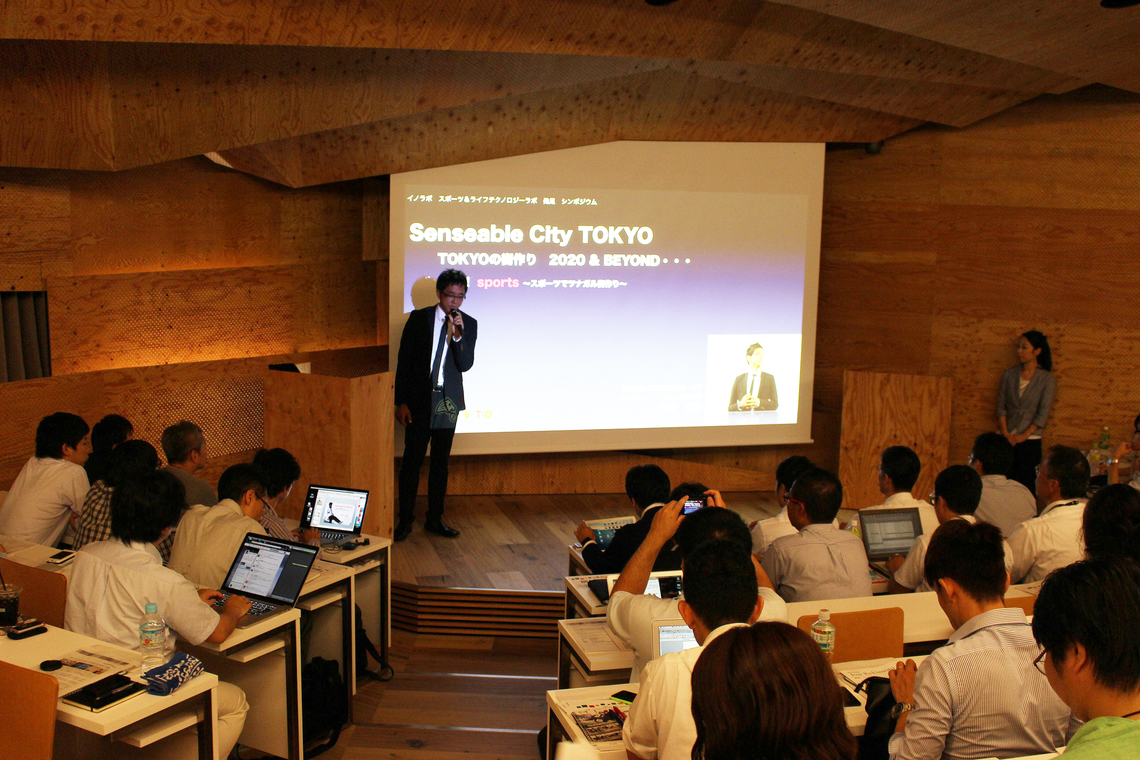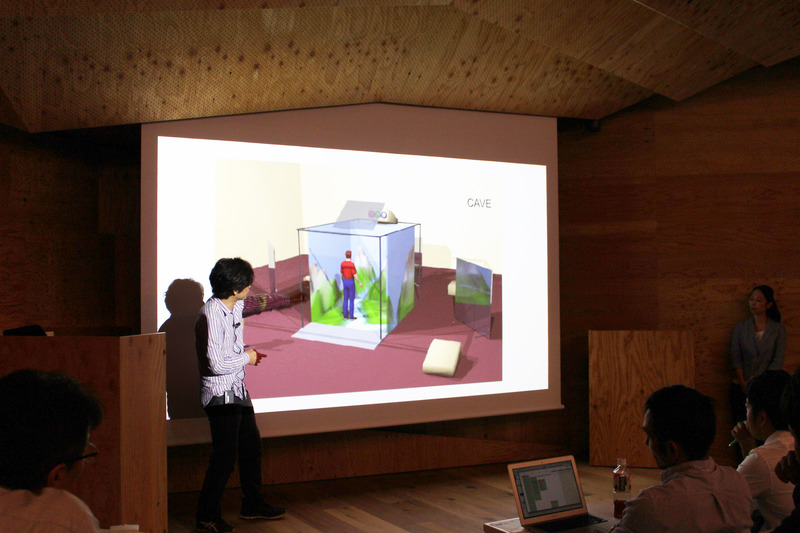Dentsu Inc. International Information Services (ISID)'s Open Innovation Laboratory (Inolab) has tackled numerous projects transforming daily life through IT, including the world's first social city "Grand Front Osaka" and education utilizing SNS. Since its launch in 2011, it has conducted over 700 sessions and 40 proof-of-concept experiments, with seven projects reaching commercialization and ongoing research.
Now, Inolab has unveiled a new urban development project that connects people through IT and sports. Inviting Professor Junichi Koyama, a Senior Research Fellow at the University of Tokyo Graduate School and Deputy Director of Sony Computer Science Laboratories, they launched a specialized research division called the "Sports & Life Technology Lab."
This report covers the "Sports & Life Technology Lab Launch Symposium," featuring guest speaker Dai Tamesue, former professional track and field athlete.
We want to create systems that make sports more enjoyable and accessible for everyone.
Nobuhiko Watanabe, Director, Open Innovation Institute

"Our goal is not just to build a city for the Tokyo Olympics. We want to create a city that will endure long after the Olympics have ended. To achieve this, we believe we must develop a city platform that can be used for 20 or 30 years.
This lab will primarily research two themes: "developing new sports everyone can enjoy" and "developing a city platform that connects people through sports." Furthermore, we plan to combine these two and attempt to "develop new cities that effectively incorporate these new sports." We aim to propose an entirely new form of future city, equipped with sensing capabilities as infrastructure, where various aspects of daily life naturally merge with the digital world. Creating systems that allow everyone to enjoy sports more easily and naturally—this is our mission.
Once this city is realized, data from all devices—whether wearables owned by individuals or sensors installed throughout the city—will be automatically collected and interconnected. The entire city will then suggest personalized sports activities, locations, and opportunities to connect with others.
For example, if you feel like playing basketball, a request to the city instantly finds an available court and optimal teammates, setting up your game. Or, the moment you finish jogging, your favorite sports bar sends a notification offering a free beer... It could even propose new sports where people of different ages and abilities, like youth and seniors, can play together on equal footing. A future where people and the city connect through sports is beginning to move.
"Data alone, just accumulated, has no meaning. Its true value is realized when it connects people and events, matching them together to support community building—when it becomes 'event creation'. Let's build a new city together, where IT meets sports!"
Developing sports that everyone can enjoy together through technology
Junichi Koyomimoto, Senior Research Fellow, "Sports & Life Technology Lab"

Next to take the stage was Senior Research Fellow Junichi Koyomimoto. Known as a world-renowned authority in interface research, he has recently focused his efforts on "Augmented Sports," research that uses technology to augment sports.
"I believe sports should be 'healthy and enjoyable.' If technology can provide more people with fun, accessible sports, nothing could be more wonderful. That conviction led me to research Augmented Sports. When Augmented Sports becomes reality, for example, college students and seniors can enjoy sports together, and people with varying athletic abilities can try the same sport on equal footing. It eliminates physical ability gaps, allowing everyone to enjoy sports together."
Currently, research is underway on entirely new ball games like "HoverBall," which uses a ball with an embedded quadcopter (ultra-compact helicopter), and "AquaCAVE," which projects underwater scenes onto the walls of an aquarium tank. Advancements in HoverBall research could enable everyone to enjoy catch equally—for instance, a ball thrown with full force by a young person might arrive slowly at an elderly person's hands, while a ball thrown by a small child could gain momentum and come hurtling toward them. Furthermore, AquaCAVE allows swimmers wearing LCD shutter goggles to swim while viewing wide-angle stereoscopic images.
At the Sports & Life Technology Lab, Mr. Koyomimoto focuses on developing and implementing new interaction technologies and analyzing the data collected from them. What kind of evolution will HoverBall and AquaCAVE achieve by 2020?
Beyond Wearables: Cyborgs!? The Theme is Moving the Body with Technology
Former Professional Athlete Dai Tamesue

The final speaker was Dai Tamesue, men's 400m hurdles record holder and World Championships bronze medalist. Appearing as a guest speaker, he presented on "Sports and City" from an athlete's unique perspective.
"Markus Rehm, a Paralympic long jumper active in Germany, currently jumps farther than any Olympic athlete in Germany. What's remarkable is that he increased his jump distance by about 70 centimeters in just one year using a prosthetic lower limb. At this pace, it's predicted that around 2016, we'll see an era where Paralympic athletes jump farther than Olympic athletes. Their strength lies in freely choosing their Achilles tendon and being able to extend their prosthetic legs. I believe this field still holds immense potential and will expand significantly. Wearable parts will eventually evolve into implantable components that fit the body more closely. We believe the era of cyborgs is approaching. The theme will likely become how we integrate technology into our bodies to maintain mobility."
After this, he explained how the Olympic Village will be sold as residential housing for the general public after the Games. Anticipating that one-third of Japan's population will be over 65 by 2020, he proposed, "Wouldn't it be better to build the entire Village barrier-free, designed for Paralympic athletes?"
Watanabe, Koyomimoto, and guest speaker Tamesue. These three leaders in technology and sports spent over an hour discussing the future of cities, making for a very fulfilling symposium.
Additionally, the Hongo Experimental Studio, the base of operations for the Sports & Life Technology Lab, opened on this day. Following the symposium, a tour featured demonstrations of HoverBall and AquaCAVE.








